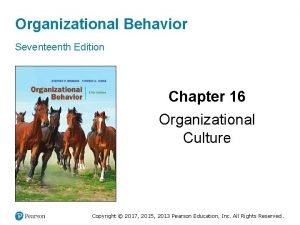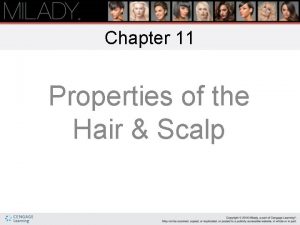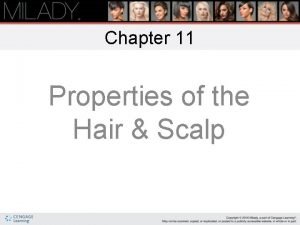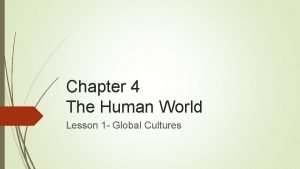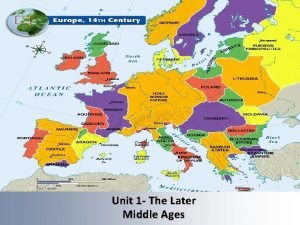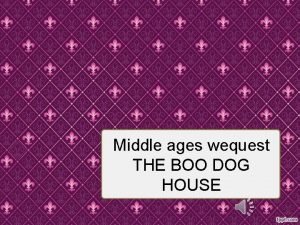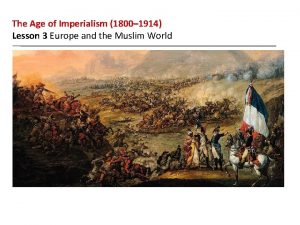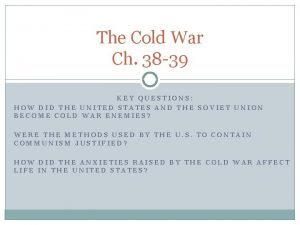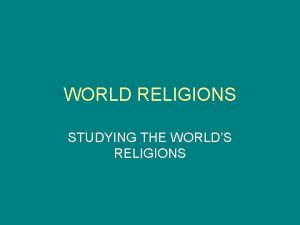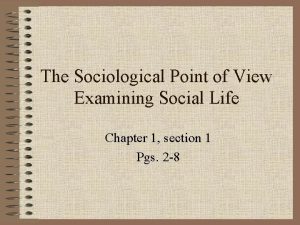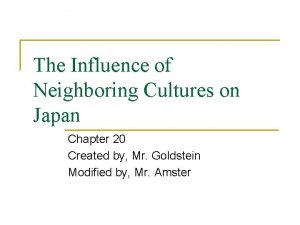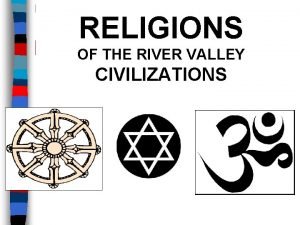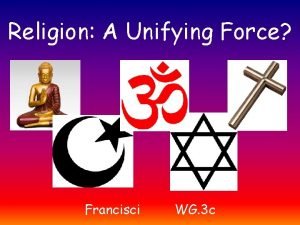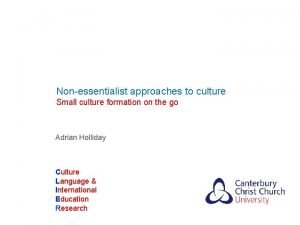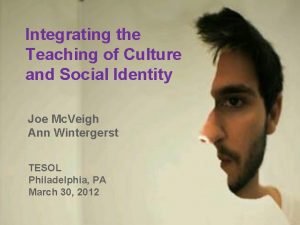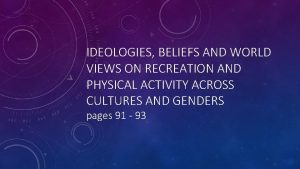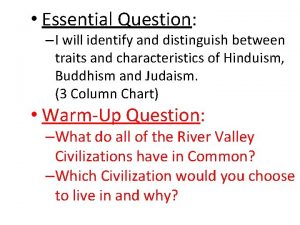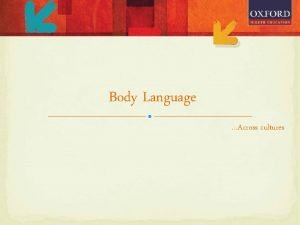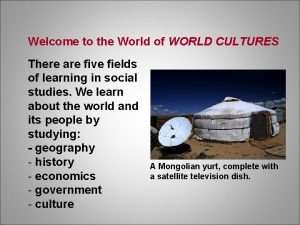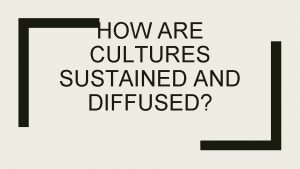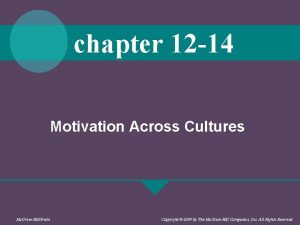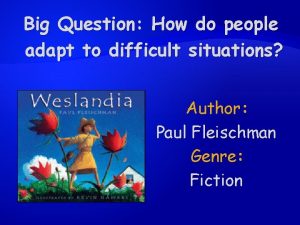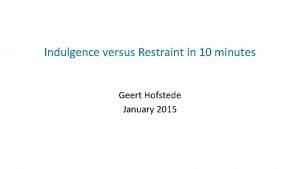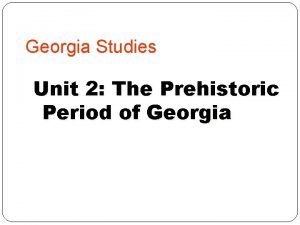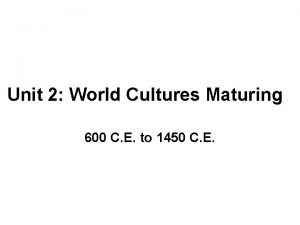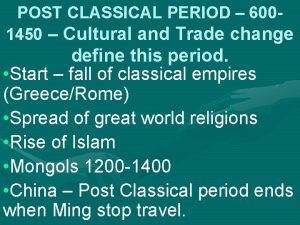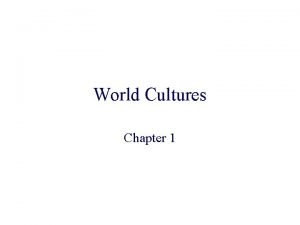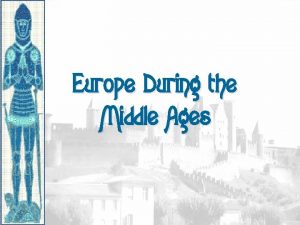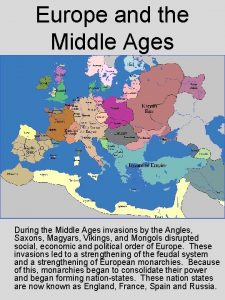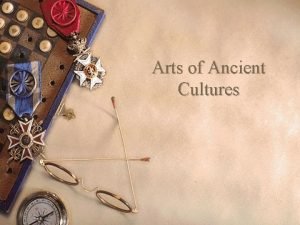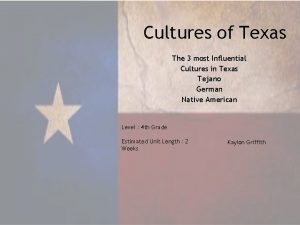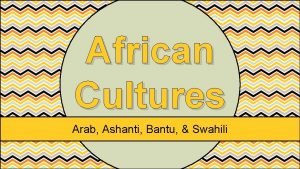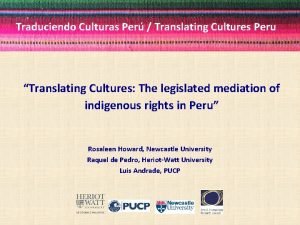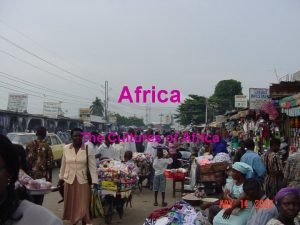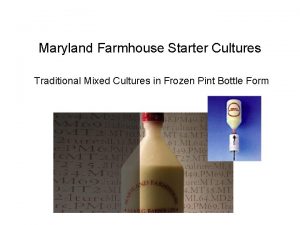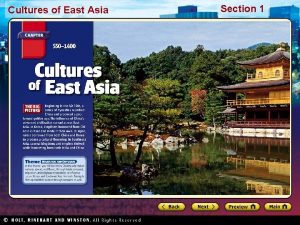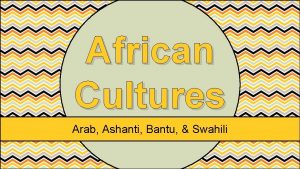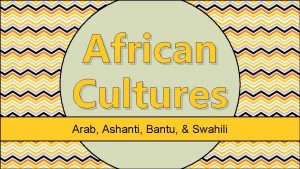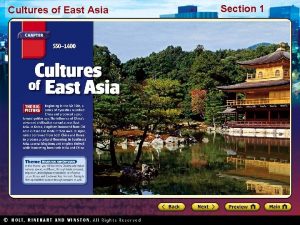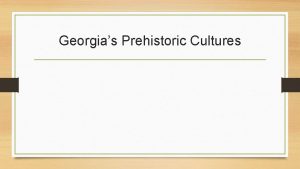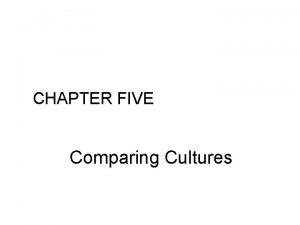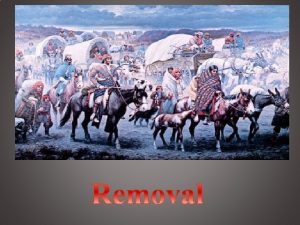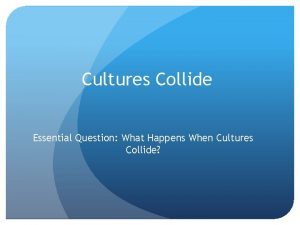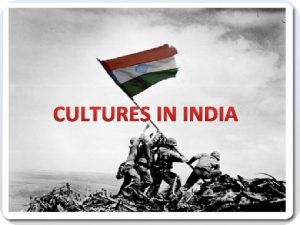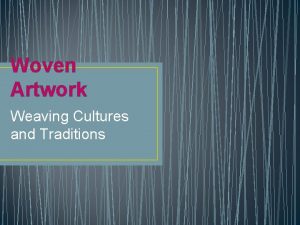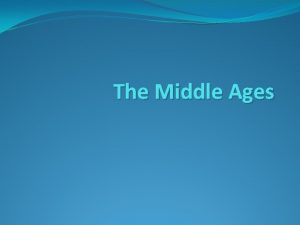World Cultures Maturing 6001450 Europe during the Middle



































- Slides: 35

World Cultures Maturing 6001450 Europe during the Middle Ages and Renaissance

E. Q. • What led to a beginning of time known as the Middle Ages? • What time period is known as the Middle Ages?

Fall of the Roman Empire in 476

Fall of the Roman Empire • No longer a strong central government in Western Europe • People are looking for protection from “Barbarians”. • Ushers in “Middle Ages” and the beginnings of Feudalism and Manorialism.

Feudalism and Manor Life • Middle ages 500 -1500 • Feudalism- lords awarded land to vassals. In exchange vassals made sure the land would be protected. • Class structure- Monarch (top), Nobles and knights(middle) Serfs (bottom

Life on a Manor • Manors were selfsufficient. • Serfs worked the land for vassals • Knights protected land. • Code of Chivalry- a knight must be virtuous.

Catholic Church Shapes Feudal Society! • Monasteries preserved many Latin and Greek manuscripts. • Gave cultural cohesion in Europe during a time of decentralization!

Political Power of Church • Popes had moral authority. Could issue calls for excommunication and holy wars (crusades) • Owned vast amounts of land. Had much power. • Set up inquisition to hunt out religious nonconformers!

Carolingian Dynasty • 1 st major empire to emerge after fall of Rome. A Frankish Kingdom. (france, Germany) • Charles Martel defeated Muslim invaders at Battle of Tours. Increased power of dynasty!

Charlemagne • Charles the Great • Expanded the Kingdom made it an Empire. Crowned by pope “Holy Roman Emperor”! • Supported education and culture (unlike most medieval societies).

Vikings • Came from Scandinavia. • Invaded W. Europe during the Middle Ages. • Created the 1 st Russian State • Caused England, France to be more Centalized. • Around 1000 c. e. voyagers led by Leif Ericsson reached Canada.

England France • For Centuries political leaders in both countries were intertwined. • Normans led by William the Conquerer invaded England established their rule. • Brought French style feudalism to England.

Magna Carta • In 1215 imposed on the King guaranteeing the nobility certain rights and privileges. • Limited the power of the monarch. Later in 1200’s England would form a parliament. • Power to the People!

Hundred Years War 1337 -1453 • England vs. France • Joan of Arc helps to drive English out of France (English were winning) • War ended awkward connections between French and English Royal Families. Helped French Kings centralize power.

Spain and Portugal • Were taken over by Muslim invaders (moors). • Reconquista- Spanish drive Muslims out of Spain. • Would eventually be defeated by Isabella and Ferdinand who created Spain. • Muslims and Jews must convert or leave Spain during Inquisition.

The Crusades Christians vs Muslims • • • Causes: convert non-believers to Catholicism. To resist attacks by Muslims on Constantinople. Pope Urban called for a Crusade. Personal ambitions of Europeans wanting to gain wealth and land Racial and religious prejudice 1 st crusade was successful in recapturing the holy land. However the other three were not. Muslims will eventually regain control of the Holy land


Effects of the Crusades • Worsened the relationship between muslims and christians. • Cultural diffusion between muslims and christians.

Population Growth trade and commerce 1000 -1300 • • • Trade and Commerce became larger role in society. (feudalism is dying) Different jobs develop (bankers, merchants, traders Guilds develop (kind of like Unions) Urbanization develops (people moving from manors to towns and cities). Cities were often over-crowded and polluted. Much Povery. More opportunities for social advancement. Immunity from feudal obligation “a year and a day”

Black Death (Plague) • Arrived in mid-14 th century • After killing millions in China, disease traveled to middle east, then W. Europe • Reached Europe in 1347. • Caused panic throughout Europe. (many thought world was ending • Killed one-third of the population of Europe (25 -30 million people.

Many blamed the Jews!

Art, Architecture and Literature • Romanesque architecture- thick walls, small windows, square build • Gothic architecture ( tall, stained glass, carving, flying buttress

Gothic

The Printing Press • 1437 - revolutionized the entire world. • Johannes Gutenberg • Raised literacy rates, new ideas developed, spread information. • Helps cause the reformation and renaissance!

Islam in the Middle East and Africa • Mohammed spread Islam throughout Arabia. Then, Muslim forces conquered Sassanid Persia, weakened the Byzantine empire, and converted middle east to Islam. • Ruled by a Caliph (theocratic) political and religious power • Umayyad Caliphate continued Islam’s military expansion. • Made arabic official language of Islam • Following the Umayyads decline was the Abbasid Caliphate 7501258.

Abbasid Caliphate(750 -1258) • Capital at Baghdad • “golden age of Islamic culture” • Peace, stability, economic unity, political unity • Disintegrated due to overextension. • Final blow from Mongols who captured baghdad and killed the Abbasid Caliph. • Middle East splinters into several states

Kingdom of Mali (1250 -1460) • Most powerful in Africa • Key center of trade in western and northern africa • Islamic • Gold, salt, ivory, slaves • Timbuktu (commercial center) • Mansa Musa systemized the government • Pilgrimage to Mecca • Trans-Saharan trade networks Linked Africa to world

Mamluks and Seljuk Turks • Both were Islamic • Seljuks had helped cripple the Byzantine Empire • Victories helped to bring about the crusades in 1095

Crusaders, Mongols, Crisis • Crusades threw middle east into political confusion. • Saladin recaptures Jerusalem • Mamluks, Arabs, and Seljuk Turks got better at fighting crusades. • .

Ottomans Turks • Served Seljuk's as vassals. • During 1300 -1400 s took over most of the middle east including Seljuk, Mongol land. • Captured Constantinople ending 1100 year history of Byzantine Empire • Sets the stage for struggles between Muslims and Christians • Suleiman the Magnificent: Brought European culture to Ottoman Empire.

Islamic Culture • More advanced than Europe from 700 s -1200’s • Religion plays a huge role • Ibn Battuta(islamic worlds greatest explorer). Traveled to china, India, Mecca, Turkey Spain more than 75, 000 miles Wo. W!

Tang, Song, Yuan, Ming • “Golden Age” during Tang and Song China (paper money, silk, porcelain, clock, math and science) • Repression of Buddhism during the Tang, and technological explosion during the Song. • Yuan- “Foreign” rule of China, Confucianism declines for a time (plague) and population decline: however explosion of culture as a result of Pax Mongolia (trade with Il-Khanate) eventual assimilation of Mongols. • Ming- Re-establishment of Chinese ideals. • - Zheng He- exploration for tribute, then China stops exploration. Ethnocentrism! • Influenced both Tokugawa Shogun in Japan and Koryo in Korea

Map of Tang • Grand Canal • Silk Road • Junk and Indian Ocean Trade


 Organizational cultures often reflect national culture.
Organizational cultures often reflect national culture. The maturing process of hair is:
The maturing process of hair is: The maturing process of hair is
The maturing process of hair is The human world lesson 1 global cultures
The human world lesson 1 global cultures Map of europe in middle ages
Map of europe in middle ages Art of emerging europe
Art of emerging europe Around 900 ce a new form of government called
Around 900 ce a new form of government called Lesson 3 europe in the muslim world
Lesson 3 europe in the muslim world Europe after ww2 map
Europe after ww2 map Sub cultures
Sub cultures Which cultures believe in reincarnation
Which cultures believe in reincarnation Examining social life
Examining social life The influence of neighboring cultures on japan test
The influence of neighboring cultures on japan test Which cultures believe in reincarnation
Which cultures believe in reincarnation Which cultures believe in reincarnation
Which cultures believe in reincarnation Which cultures believe in reincarnation
Which cultures believe in reincarnation Small cultures
Small cultures Taste different cultures
Taste different cultures What is culture
What is culture Characteristics of collectivism
Characteristics of collectivism Collectivistic cultures
Collectivistic cultures Recreational activities across cultures and genders
Recreational activities across cultures and genders Is buddhism monotheistic or polytheistic
Is buddhism monotheistic or polytheistic All cultures undergo
All cultures undergo Communicating across cultures ppt
Communicating across cultures ppt Body language across cultures respuestas
Body language across cultures respuestas How many cultures are there
How many cultures are there How are local cultures sustained
How are local cultures sustained High-context cultures emphasize nonverbal messages.
High-context cultures emphasize nonverbal messages. Chapter 20:3 puncturing the skin to obtain capillary blood
Chapter 20:3 puncturing the skin to obtain capillary blood Motivation in different cultures
Motivation in different cultures Words from many cultures weslandia answers
Words from many cultures weslandia answers Bacterial growth
Bacterial growth Pengertian transmisi budaya
Pengertian transmisi budaya Indulgence vs restraint adalah
Indulgence vs restraint adalah Georgia's prehistoric cultures chart
Georgia's prehistoric cultures chart
